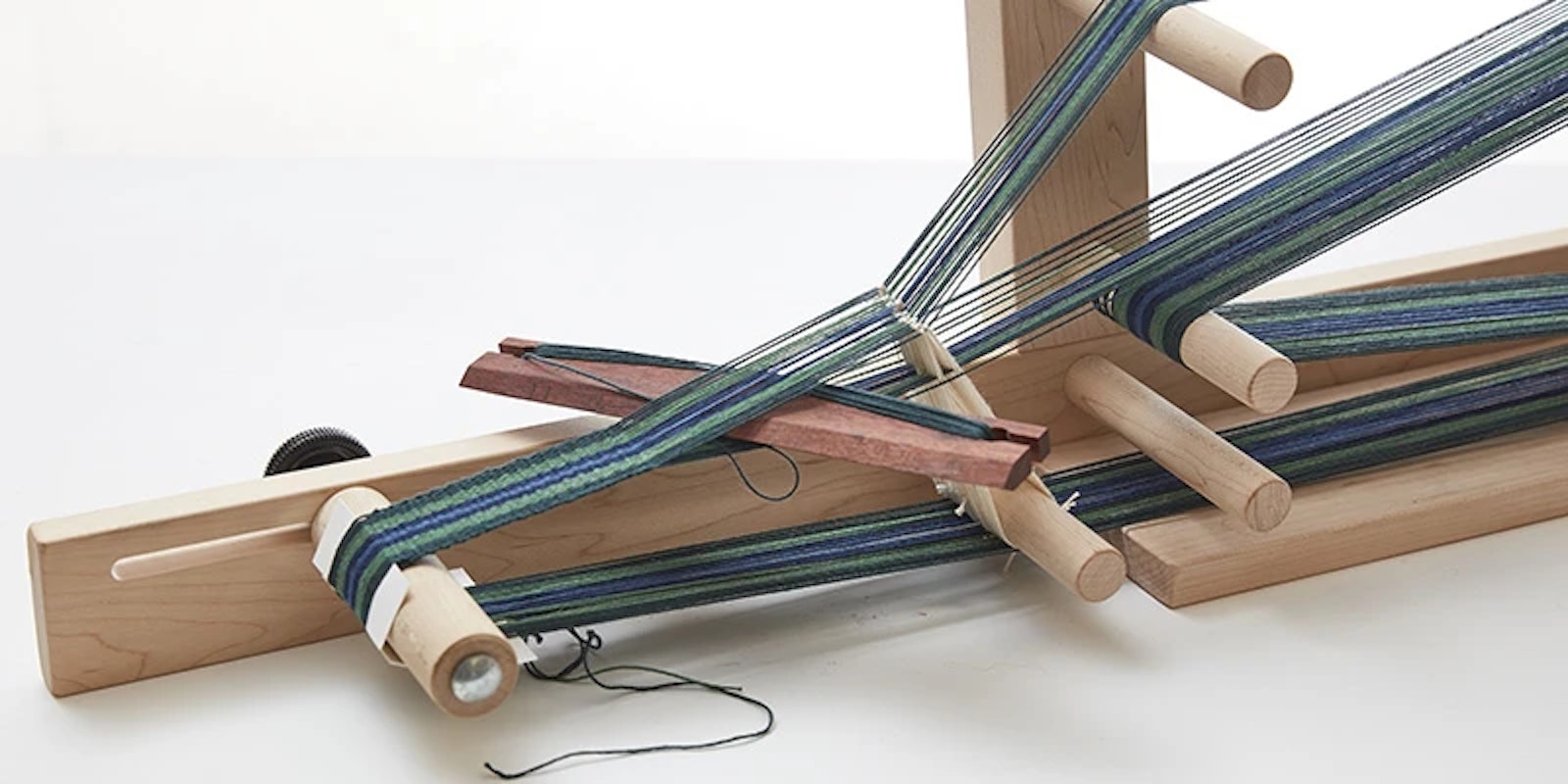This last week, I had the pleasure of attending the opening of an exhibit of Andean textiles from the Center for Traditional Textiles of Cusco (CTTC). At the opening lecture, CTTC director Nilda Callañaupa Alvarez gave a slideshow and talk about the weaving techniques, traditions, and communities in the Cusco area. At a gathering of weavers the next evening, the talk inevitably turned to the subject of selvedges. Some of us had been raised to believe in the use of temples, and some had been taught to abstain from temple usage. (This is not as great a religous schism as front-to-back versus back-to-front warping, but the temple and anti-temple sects have their faithful, too. I was taught by Madelyn van der Hoogt, and I am a firm temple believer.) We shared the value of properly wound bobbins in creating perfect selvedges, and many other revelations, and I think we all left a little more enlightened than we came.
 | |
| Each weaver had to weave perfectly to size to create their part of this winning hanging from the village of Accha Alta, Peru. |
Over the weekend, I thought about the selvedge conversation in light of Nilda's talk on the Peruvian weaving communities. She spoke of communities that had spent eight years or more bringing their textiles up to the level of artisanship and quality that the CTTC aspires to. Some of the newer communities have struggled because the weavers also work hard to farm their food, in addition to raising children, leaving little time to practice their weaving. She spoke of weaving competitions among the communities where numerous weavers create pieces that are joined into their village's entry, and the consternation among some of the weaving groups when the pieces didn't fit. And later we looked at a striking piece of scaffold-weaving from the village of Pitumarca, made with an ancient discontinuous warp technique and design that reveals the slightest flaw in selvedge or beat.

|
The gorgeous Peruvian textiles in the CTTC exhibit were inspiring, and the perspectives of the weekend were equally inspiring: It takes time to perfect our weaving, whether we live in a developed area or in a mountain village in Peru. Weavers the world around struggle for that time, pulled in different directions by the demands of families and the necessities of earning a living. But that's OK. We're on a journey together. And, just as the weavers of Peru learn from their elders, we have weaving elders to help us on our journey through workshops, and videos––at our sides just when we need them. Whether they are of the back-to-front, front-to-back, temple, or no-temple persuasions, we can learn from their wisdom and make our weaving a little better every day. We can take their lessons, accept the time we have, and weave on in faith, knowing that the perfect selvedge awaits.


